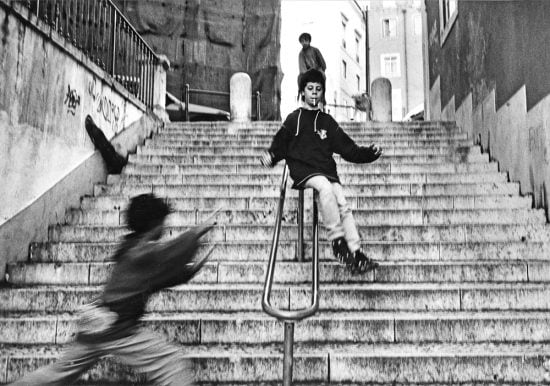Unknown Facts About Street Photographers
Unknown Facts About Street Photographers
Blog Article
All About Street Photographers
Table of ContentsOur Street Photographers IdeasThe Definitive Guide to Street PhotographersAll about Street Photographers8 Easy Facts About Street Photographers ExplainedStreet Photographers Can Be Fun For Anyone
A category of photography that documents day-to-day life in a public location. The very publicness of the setup makes it possible for the professional photographer to take honest photos of unfamiliar people, usually without their expertise. Street photographers do not necessarily have a social function in mind, yet they like to isolate and catch minutes which could or else go unnoticed (Street Photographers).Though he was influenced by a lot of those who influenced the street photographers of the 1950s and '60s, he was not chiefly interested in catching the spirit of the road. The impulse to visually record individuals in public began with 19th-century painters such as Edgar Degas, douard Manet, and Henri de Toulouse-Lautrec, that functioned side by side with digital photographers trying to catch the essence of urban life.
Due to the comparatively primitive technology readily available to him and the lengthy exposure time called for, he had a hard time to record the pressure of the Paris streets. He experimented with a collection of photographic approaches, trying to discover one that would certainly enable him to catch activity without a blur, and he found some success with the calotype, patented in 1841 by William Henry Fox Talbot. While the photographers' topic was essentially the exact same, the outcomes were markedly different, showing the effect of the digital photographer's intent on the personality of the photos he produced.
Provided the great top quality of his pictures and the breadth of material, designers and musicians frequently purchased Atget's prints to use as reference for their very own work, though business rate of interests were barely his main motivation. Rather, he was driven to picture every last remnant of the Paris he enjoyed. The mingled interest and necessity of his mission shine through, resulting in photos that tell his own experience of the city, qualities that expected street digital photography of the 20th century.
Street Photographers Things To Know Before You Get This
They disclose the city via his eyes. His work and fundamental understanding of digital photography as an art kind functioned as motivation to generations of digital photographers that followed. The next generation of street photographers, though they likely did not refer to themselves as such, was introduced by the photojournalism of Hungarian-born photographer Andr Kertsz.
Unlike his peers, Brassa utilized a larger-format Voigtlnder cam with a longer direct exposure time, forcing him to be much more calculated and thoughtful in his practice than he could have been if utilizing a Leica.
Cartier-Bresson was a champion of the Leica video camera and among the initial digital photographers to optimize its capabilities. The Leica permitted the photographer to engage with the surroundings and to record minutes as they happened. Its relatively little size also aided the photographer discolor right into the history, which was Cartier-Bresson's favored technique.
The Main Principles Of Street Photographers
It is due to the fact that of this fundamental understanding of the art of picture taking that he is often attributed with rediscovering the medium throughout once again about a century since its creation. He took pictures for greater than a half century and influenced generations of digital photographers to trust their eye and intuition in the minute.
These are the questions I will try to respond to: And afterwards read the full info here I'll leave you with my very own interpretation of street photography. Yes, we do. Allow's begin with defining what an interpretation is: According to (Street Photographers) it is: "The act of specifying, or of making something certain, distinct, or clear"
No, most definitely not. The term is both limiting and misguiding. Seems like a road digital photography ought to be images of a streets right?! And all road professional photographers, with the exception of a small number of outright novices, will fully value that a street is not the vital element to road photography, and in fact if it's a photo of a street with perhaps a few uninteresting people not doing anything of interest, that's not road photography that's a picture of a street.
Some Ideas on Street Photographers You Need To Know
He makes a legitimate point don't you believe? While I agree with him I'm not certain "honest public digital photography" will certainly capture on (although I do kind of like the term "honest YOURURL.com digital photography") since "road digital photography" has actually been around for a lengthy time, with several masters' names affixed to it, so I think the term is below to stay (Street Photographers).
You can shoot at the beach, at a celebration, in a street, in a park, in a piazza, in a coffee shop, at a gallery or art gallery, in a city station, at an event, on a bridge, under a bridge ...
Yes, I'm afraid we worried no choice! Without rules we can not have a meaning, and without a meaning we do not have a style, and without a genre we don't have anything to define what we do, and so we are stuck in a "policies interpretation style" loop!
All about Street Photographers

Report this page